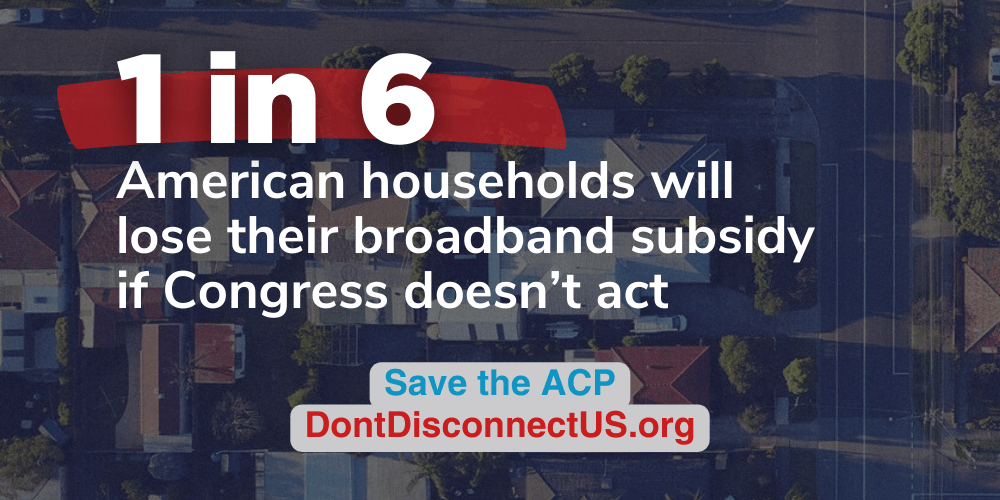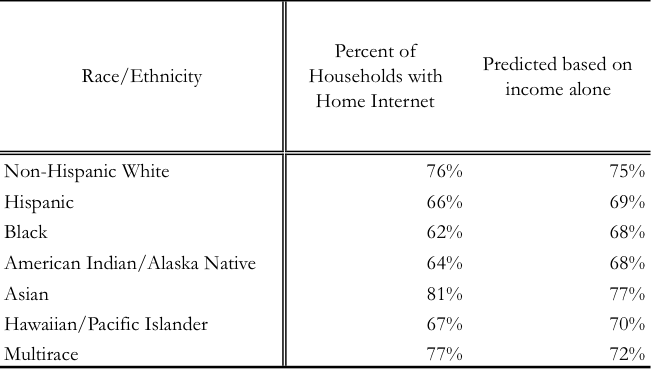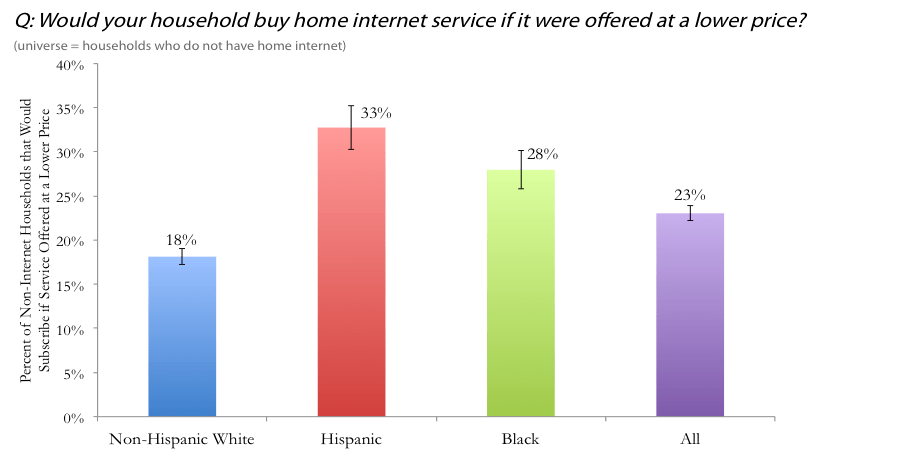Racism Strands People on Wrong Side of Digital Divide

Internet access is a necessity for engaging in our communities, searching for employment and seeking out educational opportunities — but too many people are still stuck on the wrong side of the digital divide. And that divide disproportionately impacts people of color.
Indeed, the racial divide in home-internet adoption — including both wired and wireless service — leaves people of color behind the digital curve. People of color comprise 32 million of the 69 million people in the United States who lack any form of home-internet access.
On Tuesday, Free Press released a new report, Digital Denied, which exposes this undeniable gap and explains how structural racial discrimination contributes to it. Free Press Research Director S. Derek Turner authored the study.
Systemic discrimination creates serious income inequality in this country. Whites have far higher average incomes than Blacks or Hispanics. Low-income families are less able and willing to buy internet subscriptions.
And many families who are willing to pay for service find they can’t due to racially biased barriers like credit scoring.
Given how stark racial and ethnic income discrepancies are, it’s no surprise that people of color lag behind in internet adoption.
Income differences explain some of the racial divide, but not all of it.
U.S. Census data on income and internet adoption paint a clear picture:
- 49 percent of households with incomes below $20,000 have wired or wireless internet, but nearly 90 percent of households with incomes above $100,000 do.
- 81 percent of Whites have home-internet access, compared to 70 percent of Hispanics and 68 percent of Blacks.
Free Press’ report shows that the racial-adoption gap persists even after we account for differences in income and a host of other demographic factors.
For example, there is a divide between people who are in the same income brackets but in different racial or ethnic groups.
The gap is widest for people earning less than $20,000: Fifty-eight percent of Whites in this group have some form of home internet, compared to just 51 percent of Hispanics and 50 percent of Blacks.
Home-Internet Adoption by Race/Ethnicity and Family Income (2015)

If income were the only determining factor, we would expect to see higher adoption levels for people of color.
Based on average incomes, we should expect 69 percent of Hispanic households and 68 percent of Black households to have home internet, but the actual adoption levels for these populations are 66 percent and 62 percent respectively.
Actual vs. Income-Based Expected Level of Home-Internet Adoption by Race/Ethnicity (2015)

After we account for racial and ethnic disparities in average income, and also for differences in a variety of other demographic factors (like average education, age, geography, and job status), we find that many people of color continue to lag behind Whites in adopting home-internet access.
To quantify this, the report calculates the marginal impact of race alone on household internet adoption: –5.6 percentage points for Hispanics and –8 percentage points for Blacks relative to Whites.
That means millions of people of color are stranded on the wrong side of the digital divide.
Marginal Impact of Race/Ethnicity on Home Internet Adoption (2015)

Lack of exposure to the internet at work or school may depress adoption.
Our report finds that exposure to the internet at work is highly correlated with home adoption.
Nearly 95 percent of employed individuals who go online at work have home internet, compared to just 66 percent of employed individuals who do not use the internet at their jobs.
Unfortunately, we see disparities here too: Many people of color are less likely to use the internet at work.
Internet Use at Work by Race/Ethnicity, Household and Person-Level (2015)

Hiring discrimination and the impact of educational disparities likely play a role here, but the data reveal significant differences in internet use at work between White people and Hispanic and Black people even when they have similar occupations.
This raises the specter of racial discrimination not only in hiring practices, but also in the assignment of tasks and provision of opportunities to use the internet for work.
- For example, for people who reported working in “office and administrative support occupations,” 68 percent of Whites reported using the internet at work, but only 55 percent of Hispanics and 56 percent of Blacks in the same category did.
Barriers to wired-internet adoption persist.
Digital Denied also shows that in the wireless market, the racial divide is smaller.
- 65 percent of White households use mobile internet, compared to 62 percent of Hispanic households and 59 percent of Black households.
- For low-income households, people of color actually have higher levels of use: Forty-six percent of Hispanic households and 44 percent of Black households have mobile internet, compared to only 41 percent of White households.
This does not mean that wireless is a perfect substitute for wired service, which typically comes with faster speeds and much higher data caps.
But it suggests some structural barriers to wired adoption are not as acute in the relatively competitive wireless market.
The report names a few possible culprits, including the wired market’s lack of resold and prepaid plans, and its reliance on racially biased credit scoring.
The demand for broadband is high.
One thing we know is not to blame: people of color’s demand for internet access.
Contrary to one conventional narrative, the data show that Hispanics and Blacks have high demand for internet. But steep costs and other financial barriers are two factors inhibiting these communities from adopting home internet.
- 39 percent of non-adopting Hispanic households and 35 percent of non-adopting Black households cite “can’t afford it” as a reason for not adopting home internet, compared to just 21 percent of White households.
- 18 percent of non-adopting White households say they would subscribe at a lower price while a full 33 percent of non-adopting Hispanic households and 28 percent of non-adopting Black households report that they would.

People of color are also more likely to compensate for the lack of home access by going online in public spaces like libraries and community centers. This implies that many non-adopting Hispanic and Black households are “internet-ready.”
- 20 percent of non-adopting White households go online using some method other than their own wired or wireless subscription, compared to 26 percent of non-adopting Hispanic households and 27 percent of non-adopting Black households.
We’ve said it before, and we’ll say it again: The problem is not that low-income people and people of color “don’t get it” when it comes to the internet.
The problem is that persistent market failures in the broadband marketplace keep people offline.
To close the digital divide, we need to address the systemic problems that have denied people of color and low-income communities equitable internet access.
We must eliminate structural barriers in the wired market, and address the systemic racism that fuels disparities in income and education that may diminish opportunities to use the internet at work.
When our communities are under siege, the internet can be a tool for organizing for resistance and liberation. Closing the digital divide has never been more critical.
Read the full report here: Digital Denied